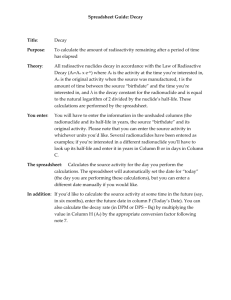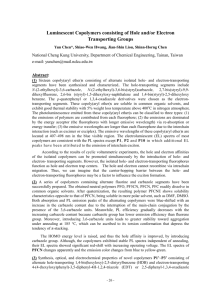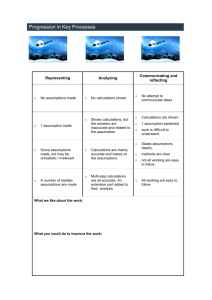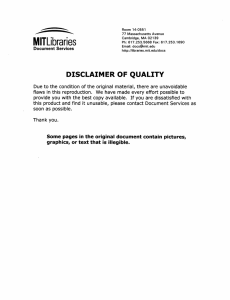Photophysics and Photochemistry of Fluorenone and Carbazole
advertisement
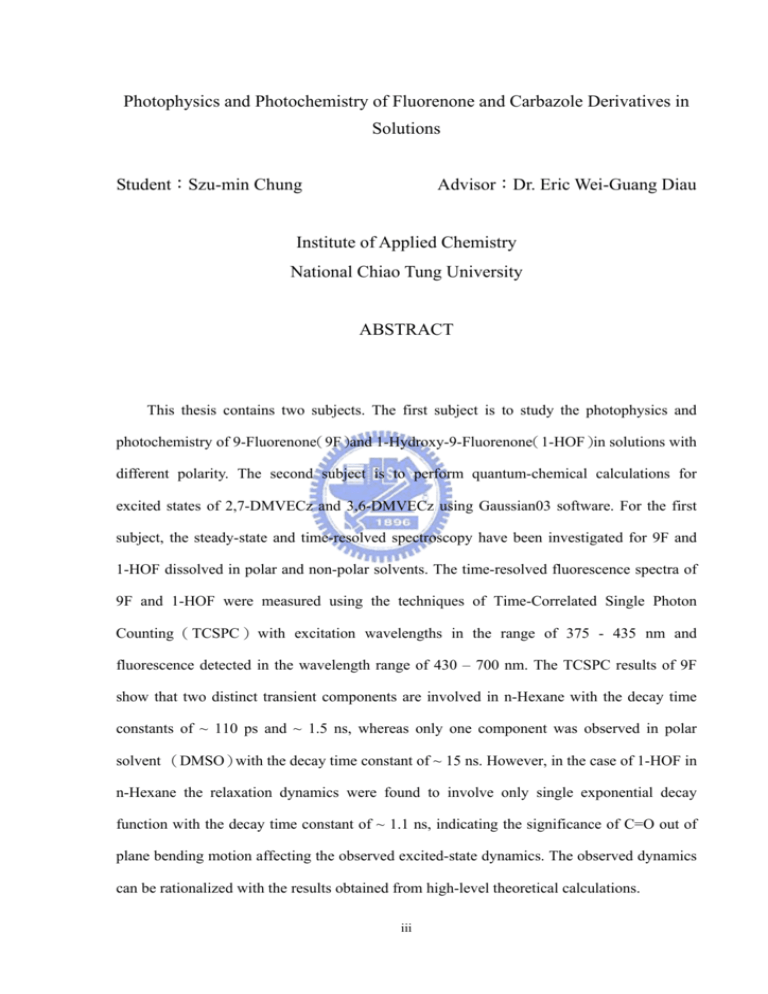
Photophysics and Photochemistry of Fluorenone and Carbazole Derivatives in Solutions Student:Szu-min Chung Advisor:Dr. Eric Wei-Guang Diau Institute of Applied Chemistry National Chiao Tung University ABSTRACT This thesis contains two subjects. The first subject is to study the photophysics and photochemistry of 9-Fluorenone(9F)and 1-Hydroxy-9-Fluorenone(1-HOF)in solutions with different polarity. The second subject is to perform quantum-chemical calculations for excited states of 2,7-DMVECz and 3,6-DMVECz using Gaussian03 software. For the first subject, the steady-state and time-resolved spectroscopy have been investigated for 9F and 1-HOF dissolved in polar and non-polar solvents. The time-resolved fluorescence spectra of 9F and 1-HOF were measured using the techniques of Time-Correlated Single Photon Counting(TCSPC)with excitation wavelengths in the range of 375 - 435 nm and fluorescence detected in the wavelength range of 430 – 700 nm. The TCSPC results of 9F show that two distinct transient components are involved in n-Hexane with the decay time constants of ~ 110 ps and ~ 1.5 ns, whereas only one component was observed in polar solvent (DMSO)with the decay time constant of ~ 15 ns. However, in the case of 1-HOF in n-Hexane the relaxation dynamics were found to involve only single exponential decay function with the decay time constant of ~ 1.1 ns, indicating the significance of C=O out of plane bending motion affecting the observed excited-state dynamics. The observed dynamics can be rationalized with the results obtained from high-level theoretical calculations. iii For the second subject, we performed a quantum-chemical calculations for the excited states of 2,7-DMVECz and 3,6-DMVECz.We also performed single-point energy calculations by using TDDFT method to obtain the potential energy surface along the bridged CC bond twisting coordinate. We found that the intersystem crossing deactivation activated in the 3,6-linked carbazole is efficient through the twisting motion of the bridged CC single bond whereas this electronic relaxation is inefficient in the 2,7-linked carbazole because extensive π-conjugation of the orbitals give the bridged CC bond a double-bond character. Therefore, the calculated results account for the much smaller values of Φf observed for the 3,6-linked carbazole then the 2,7-linked carbazole. iv


